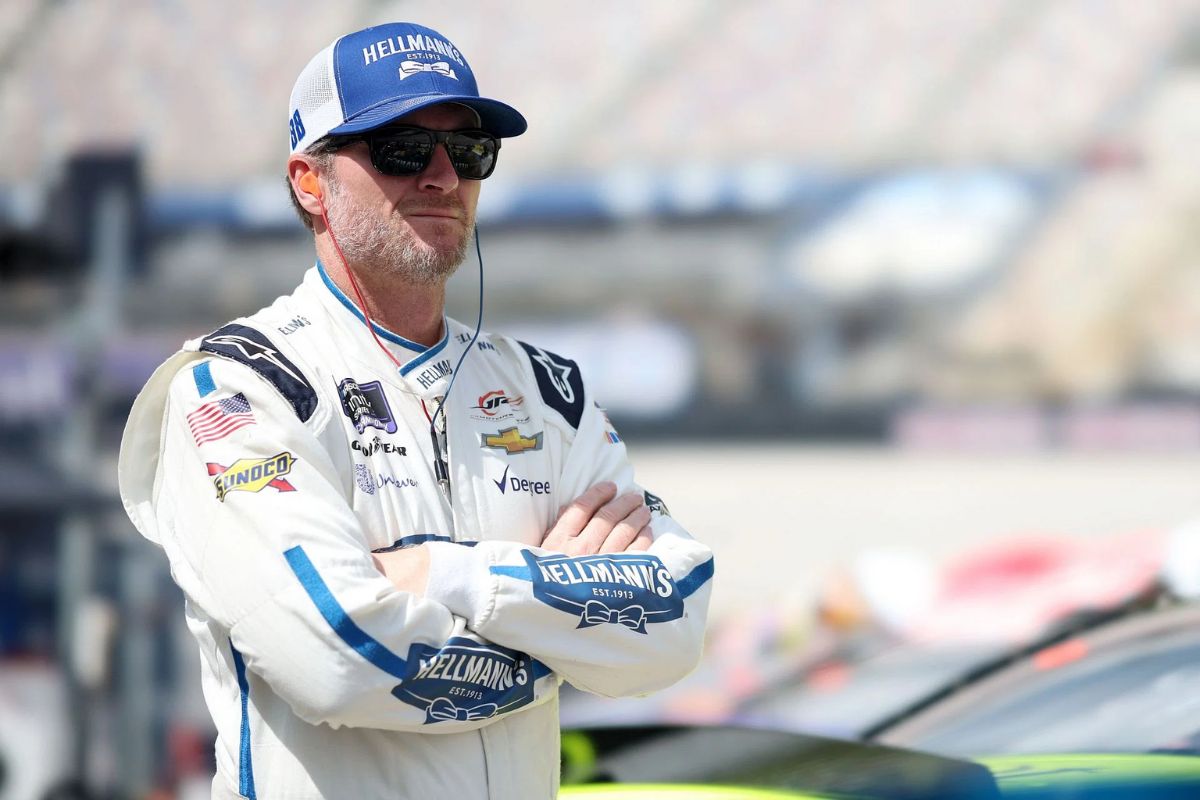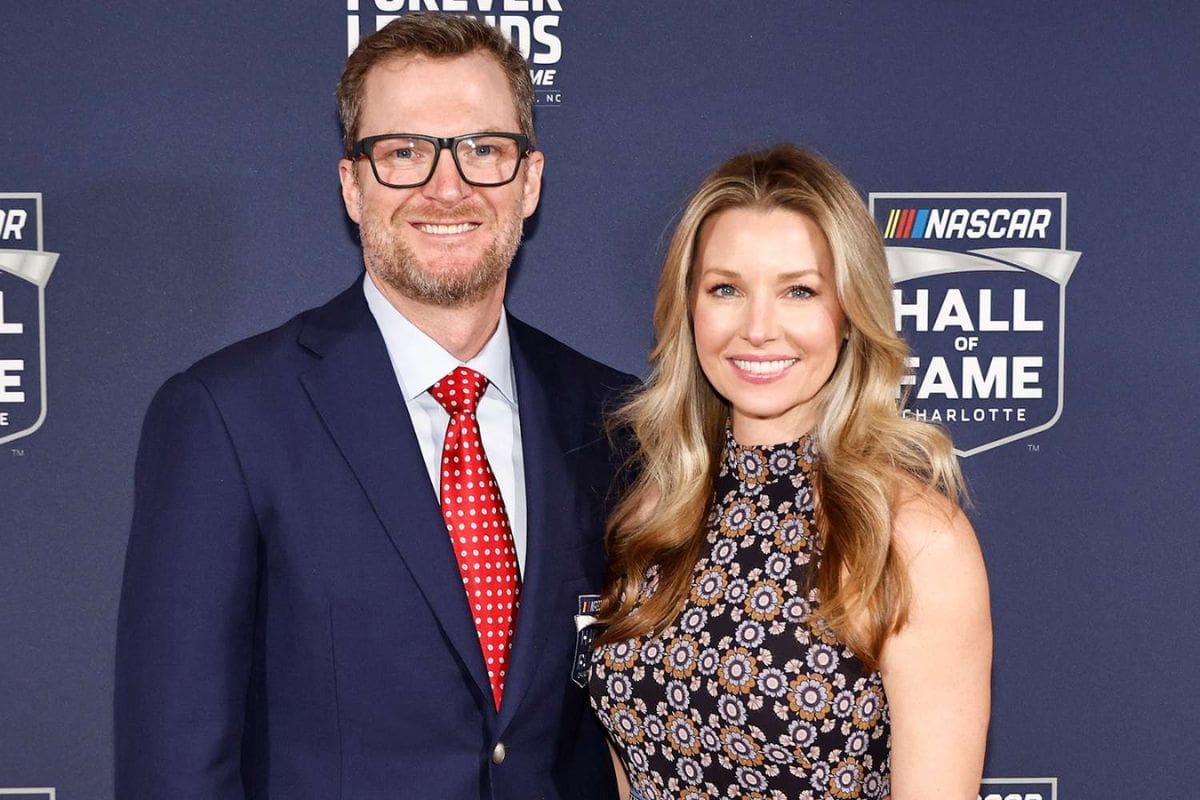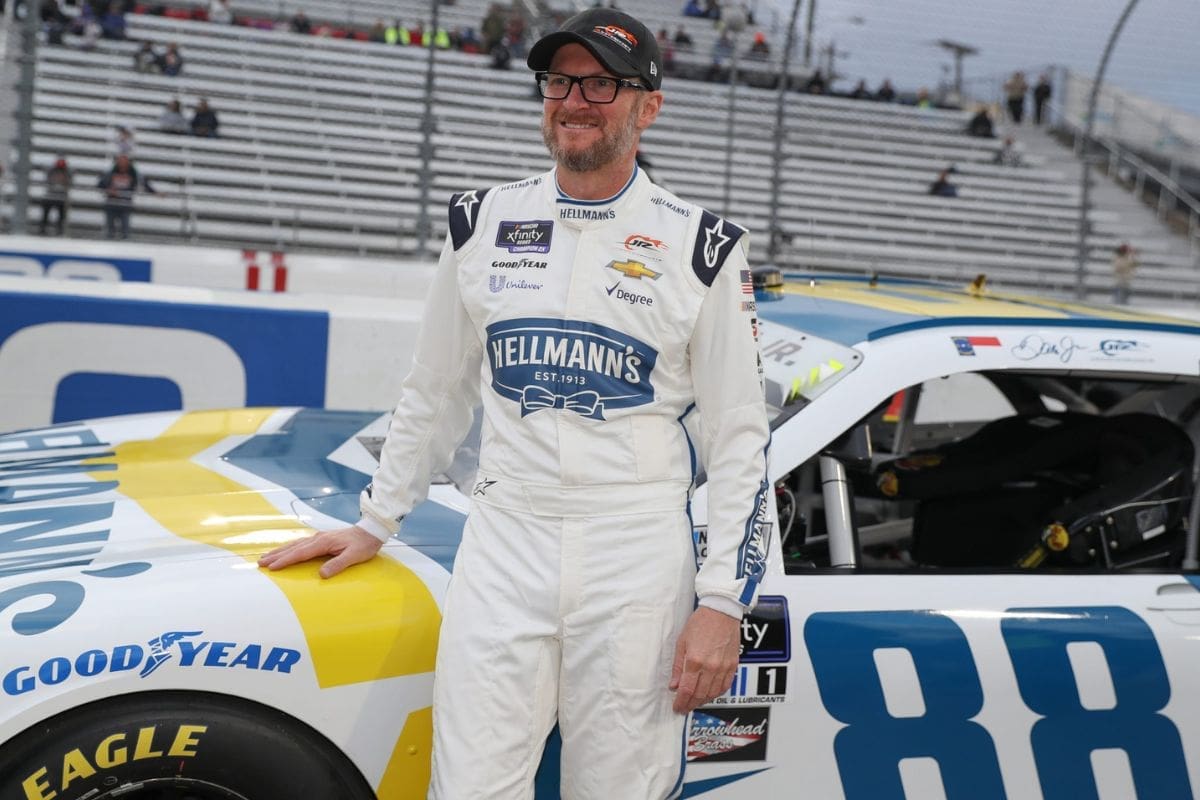Dale Jr. Shares His Weakness: Dale Earnhardt Jr.‘s recent top-10 finish at Florence Motor Speedway serves as a demonstration of his racing insight; however, it is his frank acknowledgment of qualifying struggles that invites a deeper examination of the mental and specialized challenges faced by seasoned drivers. While his skill in tire management and competition navigation is commendable, this admission raises questions about the evolving demands of modern racing and the stress that accompanies high expectations. What could this duality of success and struggle reveal about the nature of performance in a sport that is constantly in flux?
Key Highlights
- Despite finishing in the top-10 at Florence, Dale Jr. expressed dissatisfaction with his qualifying performance, highlighting ongoing challenges in that area.
- He started the race from a disappointing 22nd position, which affected his overall race strategy and mental state.
- Amy Earnhardt noted the emotional toll that qualifying days take on the family, reflecting the pressure Dale Jr. faces.
- Dale Jr. acknowledged that great finishes can still reveal underlying weaknesses, emphasizing the need for continuous improvement.
- The strain of maintaining competitiveness amid younger rivals adds to the psychological demands he experiences in racing.
Dale Earnhardt Jr’s Struggle with Qualifying
Throughout his career, Dale Earnhardt Jr. has faced a persistent challenge that many would not expect from a driver of his caliber: qualifying speed. This struggle has manifested itself in different forms, most recently observed during his foray into Late Model racing at Florence Motor Speedway. Despite his extensive experience and 26 Cup victories, Earnhardt Jr. has often found himself perplexed by the superior pace that younger competitors exhibit during qualifying sessions.
In examining this phenomenon, one must consider the changing dynamics of racing technology and strategy. The younger generation of drivers, often equipped with cutting-edge setups and a keen understanding of aerodynamic principles, seems to possess a distinct advantage in extracting maximum performance from their vehicles. This disparity is not merely a matter of raw talent; it is also indicative of a broader shift in the sport where youthful exuberance and relentless innovation converge.
While Earnhardt Jr. remains a formidable competitor in race conditions, the intricacies of qualifying present a formidable hurdle. His recent reflections, highlighted by his wife’s insights, emphasize an important aspect of motorsports: the importance of adapting to changing variables.
As he grapples with this recurring issue, it becomes evident that qualifying speed is not merely a metric of performance but a reflection of the intricate balance between experience and contemporary racing demands. Consequently, Earnhardt Jr.’s struggle with qualifying effectively encapsulates the challenges that even the most seasoned athletes face in a constantly changing competitive landscape.
Dale Earnhardt Jr’s Recent Performance at Florence
Dale Earnhardt Jr.’s recent performance at Florence Motor Speedway once again emphasized the complexities of his ongoing battle with qualifying speed. Competing in his sixth race at this cherished Late Model track, Earnhardt Jr. found himself starting from a disappointing 22nd position in the 125-lap event.
Despite his low starting spot, the veteran driver displayed remarkable talent and tenacity. Behind the wheel of the No. 3 Sun Drop Chevrolet, Earnhardt Jr. adeptly managed his tires and navigated his way through a competitive field. With approximately 60 laps remaining, he engaged in intense three-wide racing against formidable opponents, including three-time series champion Bobby McCarty and recent series winner Treyten Lapcevich.
View this post on Instagram
His ability to pass these drivers culminated in a commendable top-10 finish, a confirmation of his racing expertise. However, post-race reflections revealed Earnhardt Jr.’s dissatisfaction with his qualifying performance. He openly admitted, “I’m a terrible qualifier. I’ve no idea why, I don’t know what I’m doing wrong.”
“We had enough enough speed I think, to compete in the top-five. And I just got to qualify better. When I qualify in the back, you’re not gonna drive from the back of the field to the front anymore. The field’s too strong – I have to qualify in the top 15 to give us a shot at it.” – jr
This self-assessment highlights a vital aspect of the sport: the significance of qualifying in a field that has become increasingly competitive. With rising standards, Earnhardt Jr. recognizes that starting in the top 15 is imperative for a genuine shot at victory.
As he continues to confront these challenges, his resilience and racing skill remain evident, but the quest for improved qualifying performance looms large as he seeks to enhance his competitive edge.
Amy Earnhardt’s Observations
While the burdens of qualifying have long been a source of tension within the Earnhardt household, Amy Earnhardt’s observations provide a unique perspective on her husband’s racing endeavors. Reflecting on the historical weight of qualifying days, she noted, “We hated qualifying day back then too; we would have some really, really rough Friday evenings after qualifying.” This frank admission highlights the emotional toll that competitive racing can exert, not only on the driver but also on those who support him.
However, Amy’s insights during the recent race at Florence reveal her optimism and keen analytical eye. She observed, “It was fun watching the last 20 laps because you could see an obvious hammer down.” Her excitement emphasizes a transformation in Dale Jr.’s performance, suggesting an evolution in both his driving and mental approach.
As she reminisced about the intensity of the race, she expressed a desire for more laps, stating, “If we had seven more laps, I think he would have at least gotten up to the top three.” This statement not only reflects her belief in his capabilities but also serves as a confirmation to the tactical subtleties of racing, where timing and pace can be crucial.
“It was fun watching the last 20 laps because you could see an obvious hammer down. And it was over before I realized it was the last lap. I was like, ‘Wait a second. He just got going. We need a couple more.’ Like if we had seven more laps, I think he would have at least gotten up to the top three.” – Amy
View this post on Instagram
Through her observations, Amy Earnhardt encapsulates the essence of a supportive partner who intimately understands the complexities of racing. Her perspectives illuminate the emotional landscape that accompanies competitive sports, demonstrating how personal experiences can shape one’s understanding of performance and potential.
Dale Earnhardt Jr’s Qualifying Challenges in Previous Year
Qualifying has consistently posed challenges for Earnhardt Jr., as evidenced by his experiences over the past year. The No. 3 Late Model stock car’s performance in qualifying often set the tone for his races, creating a pattern of hurdles that he had to navigate. In a particularly tough 41-car field, he qualified 26th, a position that would typically raise concerns regarding race strategy and competitiveness.
Despite the initial disappointment, Earnhardt Jr. exhibited resilience and skill, methodically advancing to 10th place by the race break on Lap 100. His ability to stretch his tires for an extended duration displayed not just a tactical mindset but also an understanding of tire management, which proved essential in maintaining his pace against competitors on fresher rubber.
This deliberate approach, combined with aggressive moves during restarts, underscored his racing expertise, earning him respect from his peers, including a commendation from Brendan Queen for his assertive racing style.
However, the challenge of qualifying remains a notable hurdle for Earnhardt Jr. The gap between his starting position and where he ultimately finishes reflects a broader trend in his racing endeavors.
While his ability to recover and finish strong is commendable, the underlying issues in qualifying must be addressed for him to improve his comprehensive performance. As he continues to refine his approach, the hope remains that future races will yield a more favorable starting position, setting the stage for even greater success on the track.
Dale Earnhardt Jr’s Pressures and Reflections
The strains of performance weigh heavily on Dale Earnhardt Jr., shaping his racing experience and influencing his reflections on the sport. Throughout his career, the incessant strain to excel has been a double-edged sword, driving his competitive spirit while simultaneously creating a burden that can overshadow the thrill of racing.
“I know it sounds silly. but I spent my whole life trying to be as good as I possibly could. Being so competitive you almost make yourself miserable. Every dang time you ran a lap, you wanted to know how it measured up against the field. You do that your whole life, and when you get out of that, you’re so relieved to get out from under that pressure. You put pressure on yourself to live up to this expectation — especially as a Cup driver.” – jr
Despite a commendable top-ten finish at Florence, Earnhardt Jr. has been frank about the internal struggle of measurement against peers, especially in qualifying scenarios. He articulated the challenges he faces, noting the relentless comparison to fellow drivers and the expectations that come with his legacy.
“You go out there and run a lap, and you’re like, ‘Well s-, how are those guys making so much time? I’ve got basically the same car as [JR Motorsports Late Model driver] Carson [Kvapil], and he ran faster.’” – jr
To encapsulate his experience, he highlighted several key strains:
- Self-Expectations: The desire to meet personal benchmarks can lead to emotional turmoil.
- Comparative Performance: Witnessing peers excel with seemingly similar equipment fosters frustration.
- Legacy Strain: Upholding the family name adds an additional layer of scrutiny.
- Transition Challenges: Moving from a full-time driver to a part-time competitor introduces new dynamics in performance evaluation.
Dale Earnhardt Jr.’s reflections reveal a profound understanding of the sport’s psychological demands. While he revels in the joy of racing, the specter of expectation looms large.
As he navigates these complexities, his insights resonate not only with fellow racers but also with a broader audience, emphasizing the intricate balance between passion and strain in the pursuit of excellence.
News in Brief: Dale Jr. Shares His Weakness
Dale Earnhardt Jr.’s frank acknowledgment of qualifying struggles, despite a top-10 finish, highlights the complexities of modern racing performance. The contrast of skillful tire management and the inability to secure competitive starting positions accentuates the multifaceted challenges faced by athletes in the sport. Such reflections not only reveal vulnerabilities but also stress the continual evolution of racing demands, prompting a deeper examination of the relationship between performance metrics and emotional resilience in racing environments.
ALSO READ: Dale Earnhardt Jr. and Michael Waltrip’s Emotional Daytona 500 After the Race That Broke NASCAR Fans’ Hearts



